George Masa Photograph Collection: A Japanese emigrant helped create the Great Smokey Mountain National Park
G eorge Masa, born as Masahara Izuka in 1881, was pursuing a career in engineering at Meige University when a Methodist missionary converted him to Christianity and introduced him to the United States. The twenty-year-old youth stole passage on a ship and registered as George Masa at the University of California, where he majored in mining engineering. He worked in Colorado as an engineer and in 1915 came to Asheville as an employee of Grove Park Inn. There he fell in love with the mountains and developed a passionate interest in photography.
eorge Masa, born as Masahara Izuka in 1881, was pursuing a career in engineering at Meige University when a Methodist missionary converted him to Christianity and introduced him to the United States. The twenty-year-old youth stole passage on a ship and registered as George Masa at the University of California, where he majored in mining engineering. He worked in Colorado as an engineer and in 1915 came to Asheville as an employee of Grove Park Inn. There he fell in love with the mountains and developed a passionate interest in photography.
An avid hiker, he was also a perfectionist who would hike for twenty miles to remote spots and wait for hours for the perfect photo. Consummate engineer that he was, he mapped hundreds of uncleared trails in the Southern Appalachian Mountains with a contraption he'd built to measure distance. Removing the seat and back wheel from a bicycle, he attached an odometer to the front wheel which he pushed ahead as he walked, a bandana around his head to catch the perspiration, for he walked at a swift gait.
Masa was taking pictures for an article by Horace Kephart in "National Geographic" when Frank Cook invited him to Highlands in 1929. It cost Cook more than he had anticipated, for Masa stayed two weeks, refusing to take a picture unless the light was exactly right. He photographed 97 scenes of Highlands and its surroundings. Some of these he incorporated into "Land of the Sky," a promotional booklet published in 1930.
In the eighteen years that he had practiced his craft, he earned the unrivaled honor of being called "the greatest photographer of the Great Smoky Mountains." Masa's ending was pitiable, for with all his talent and fame, including his role as founder of the Carolina Appalachian Trail Club, he died of influenza at age fifty-one on June 21, 1933, penniless.
Video: The Mystique of George Masa
A talk by archivist emeritus Ran Shaffner about George Masa's life and works, with special focus on nearly 100 photographs he took in and around Highlands, N.C., in 1929, now on display at the Highlands Historical Society. Filmed by Kevin FitzPatrick, All Species Photography.
Media
Whiteside Mountain from Whiteside Cove
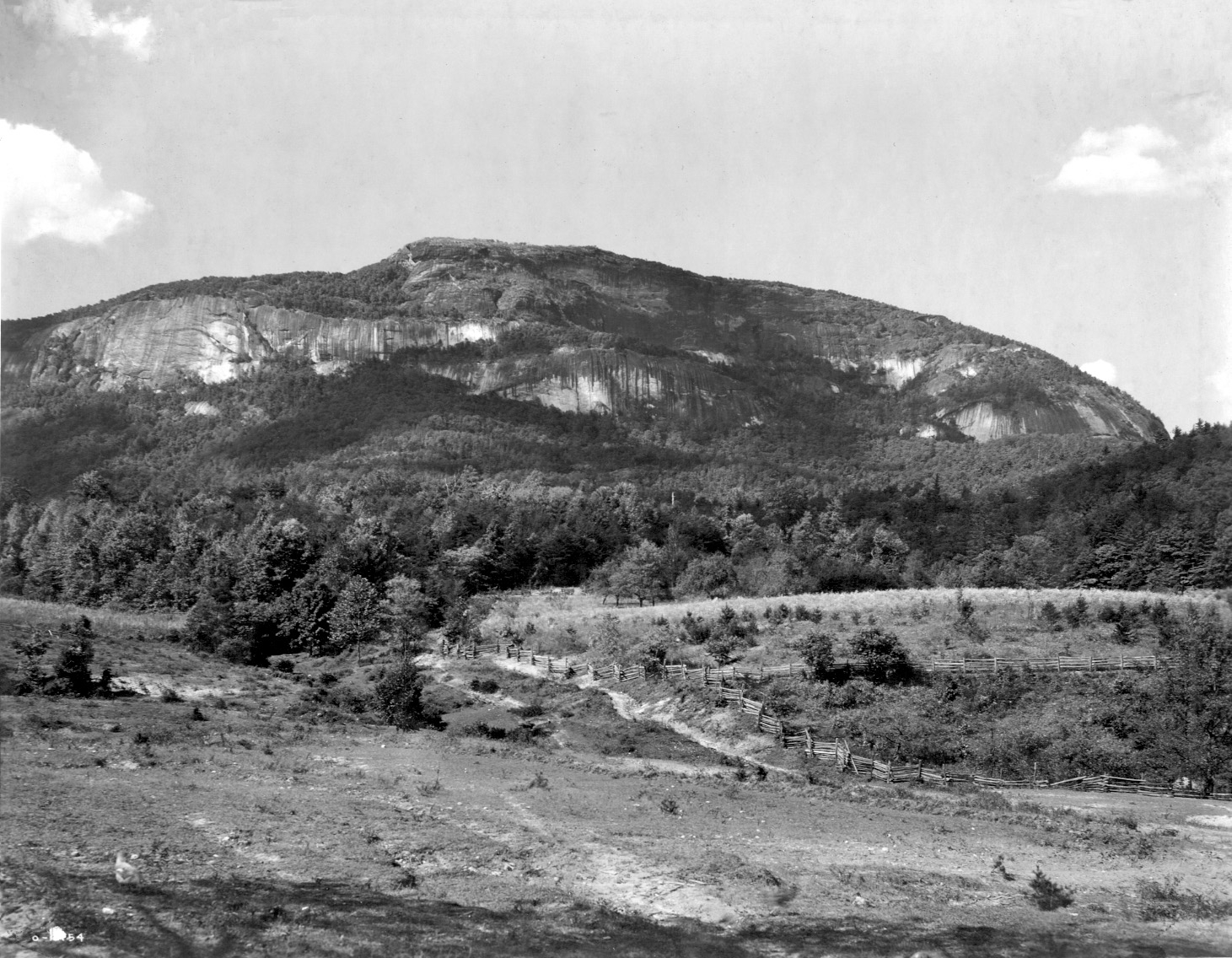
Whiteside Mountain, the highest cliffs east of the Rockies, are here seen from Whiteside Cove in 1929.
Model - T Ford at Sassafras Gap, ca.1927
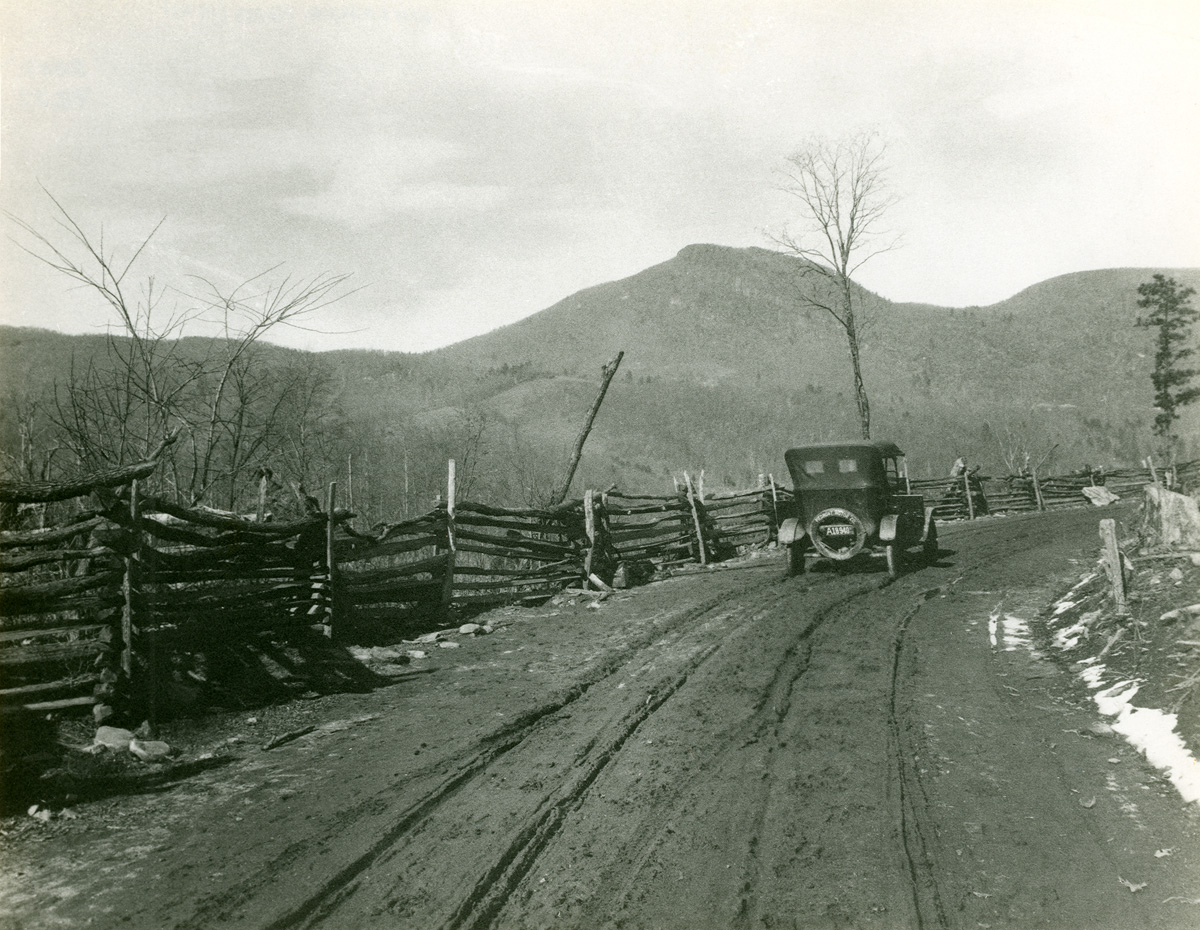
This Model-T Ford struggles to ascend the muddy road from Wahalla, Ga., to Highlands at Sassafras Gap, five miles south of Satulah Mountain, in 1927. The car is from Mountain Rest , bearing license plate A18940.
Grimshawe's Post Office
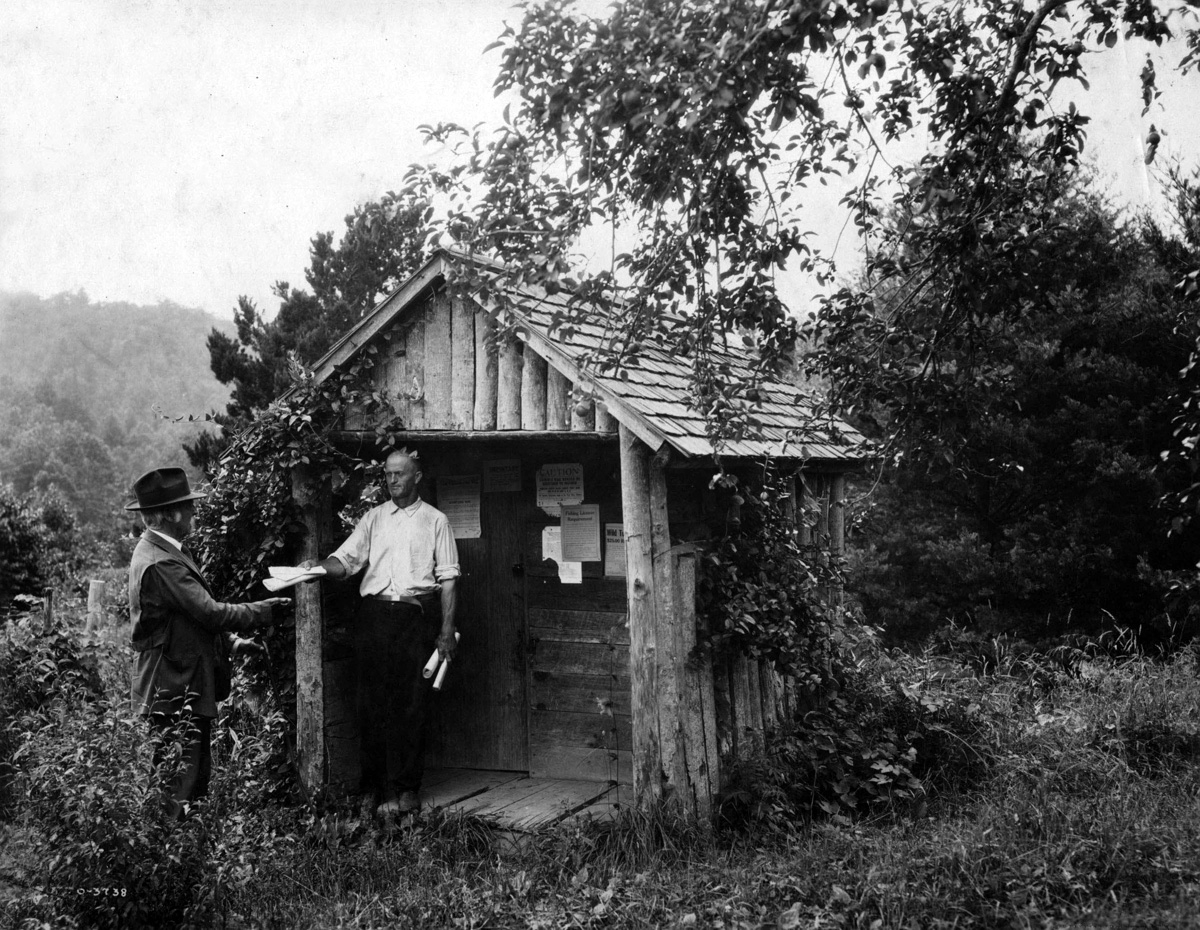
Known as the world's smallest post office (6 feet by 5 1/2 feet), this P.O. is certainly the smallest in the U.S. It was established by Thomas and Helena Grimshawe in 1878 in Whiteside Cove. Masa's photo shows postmaster W. C. Alexander handing Judge W. C. Bennett a letter in 1925.
Richardson Hemlock
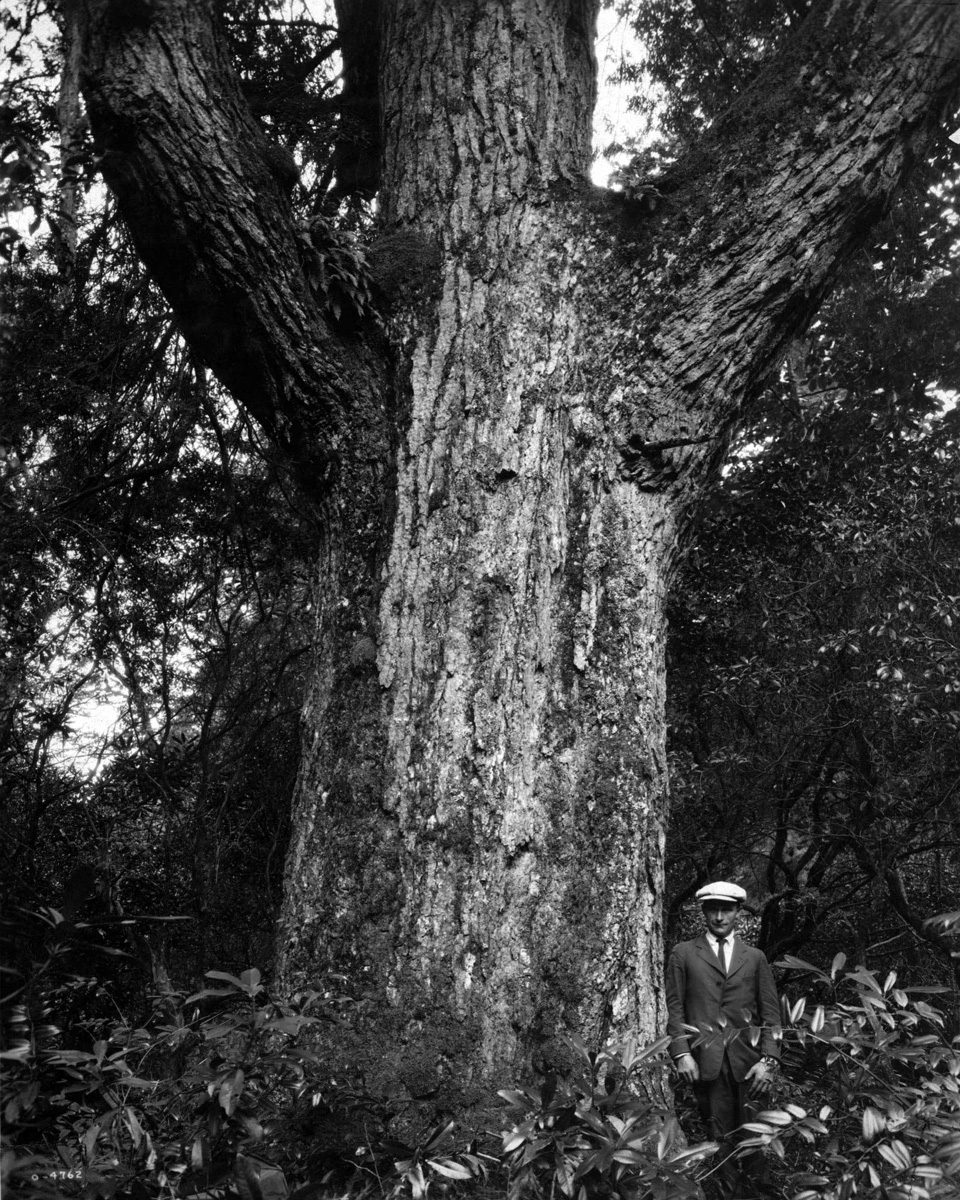
The Richardson hemlock had reached 19 feet 6 inches in circumference by September, 1943. Henry Wright stands to the side of this photo in 1929. The tree stood in "Richardson Woods," which belonged to Henry H. Richardson of Brookline, Mass., who had bought almost 300 acres of primeval forest north of Bear Pen Mountain in the late 1910s and agreed to hold it until a club, formed by Thomas Harbison, could meet his price of almost $20 per acre. Unfortunately it never materialized, and the primeval forest is no more.
Satulah Mountain cliffs, south side
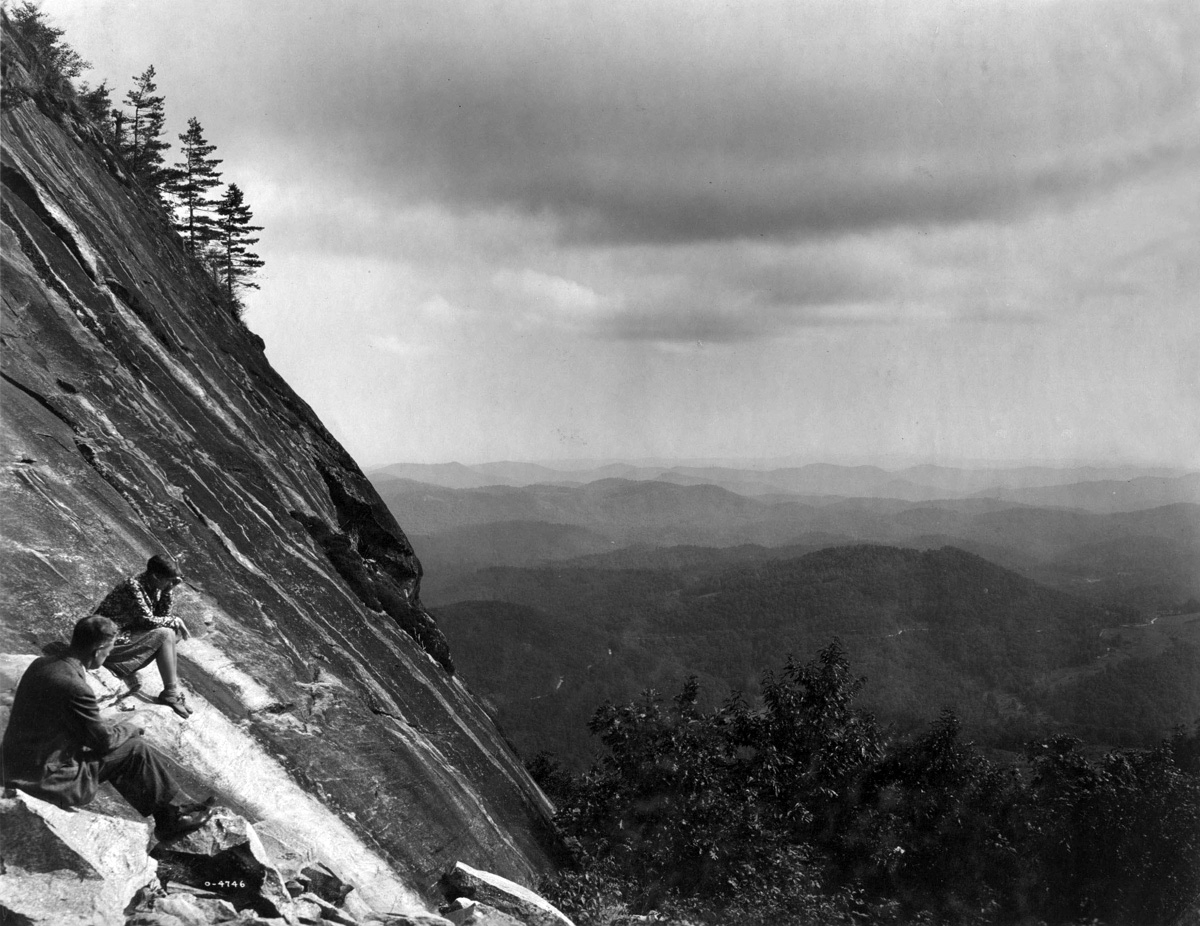
Dry Falls
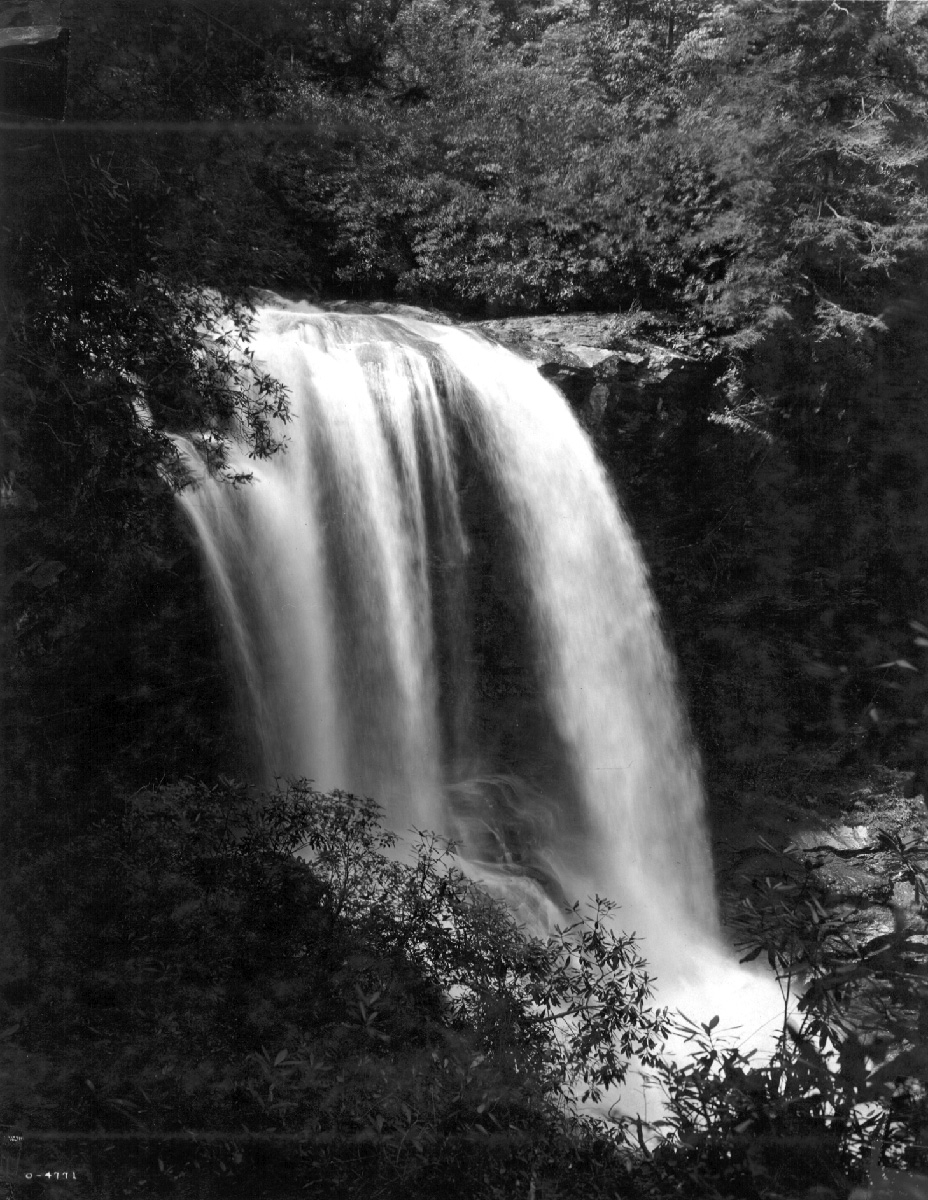
Dry Falls was also known as Cullasaja Falls, i.e., Upper Cullasaja Falls. Here people can walk under the Cullasaja River and remain basically dry. Photo in 1929.
Bridal Veil Falls, Upper side
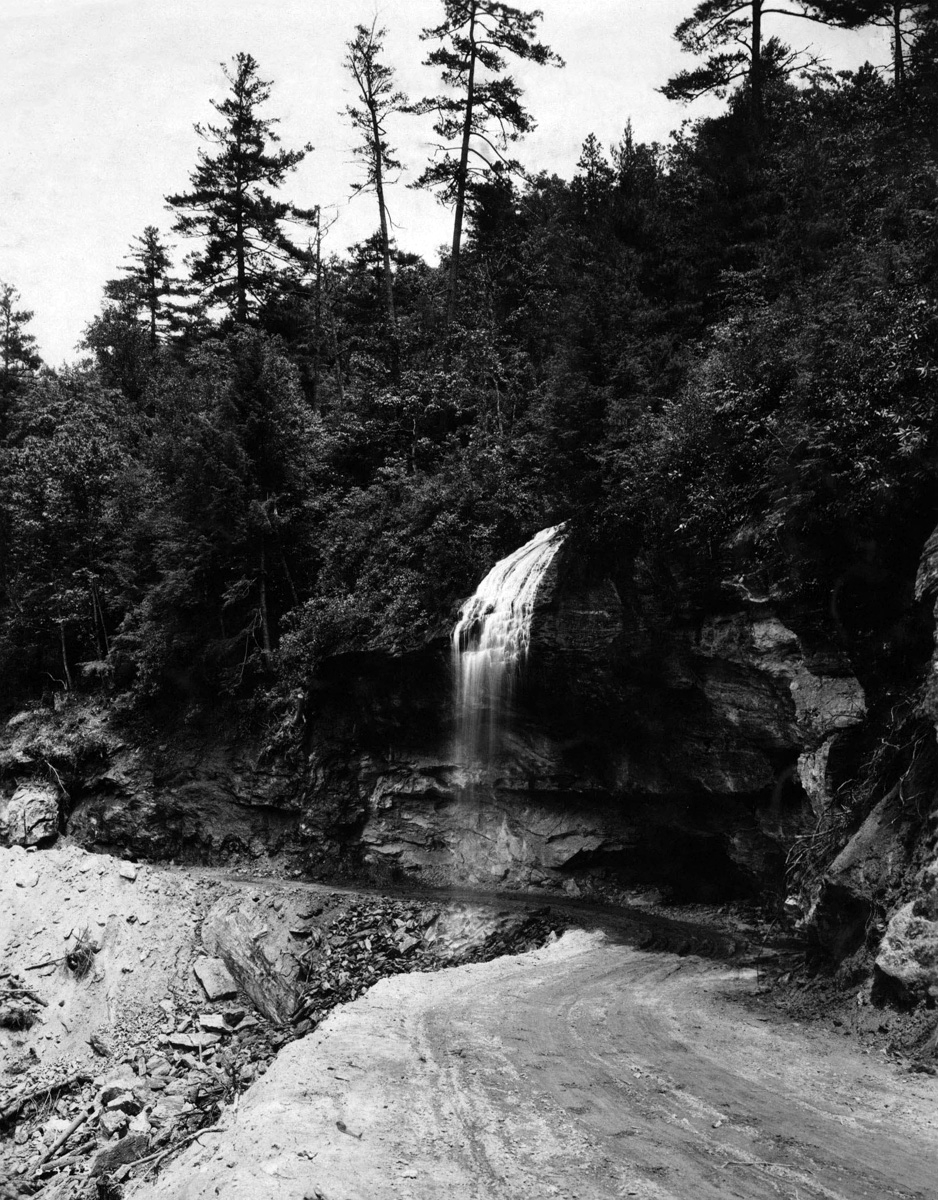
Photographer George Masa took this photo of Bridal Veil Falls in 1929, after the building of the Cullasaja Gorge road from Highlands to Franklin in 1927-28. The road to Highlands ran under the waterfall.
